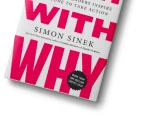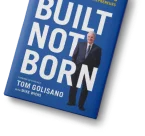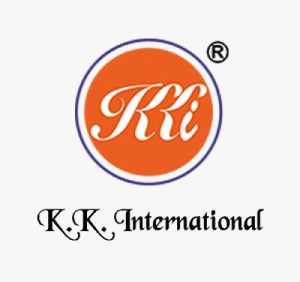When people think of content writing, they think of writing that fills up the pages of a website, blog or social media profile. Novices to the industry and laypersons think of SEO optimization, good grammar and storytelling as the hallmarks of great content copy. But there is a big distinction between creative writing and content writing. Unlike creative writing which is more art cantered, content writing is purpose led writing. The purpose in this case is bringing leads and converting those leads into actual paying customers for the business. Therefore, for any person interested in content writing the focus must be first and foremost on the purpose. Consider the following situation:
A sustainable skincare company hires you to write content copy for their website blog. They provide certain keywords, style guidelines and references of previous articles and then instruct you to take over. You submit an article on how sustainable skincare is important for the environment. You fill the content with appropriate keywords and do your due diligence and research in understanding the impact of sustainability on the environment. But you don’t think of buyer personas, earnings, desires, worries-nothing. You are looking at the big picture, writing in broad strokes. Whereas good content writing requires you to hone in your niche, narrow down your focus.
In this case, the sustainable skincare company is selling skincare products at a luxury price point. As sustainable products are also more expensive generally, the potential customer will likely be older and more experienced. When looking for products to buy, they are not seeking value for money-they are looking for effective formulations for their skin and in the process benefit the world from their hard earned cash. Instead of a technical document discussing the benefits of sustainability on the environment, the skincare writer could have focused on exact consequences of buying from the company giving examples such as- for every cream you buy, the company will contribute 5 percent to marine preservation. An older audience with more educational qualifications and experience are likely to focus on the finer details. Therefore it is essential to ensure your marketing constantly illustrates and highlights the importance of the product to the person particularly-make it so that it becomes immediately covetable. Remember, the older and richer the clientele, the more their desire for exclusivity and interesting stories. This extends to their product purchases. Your content copy should follow suit and make the product sound irresistible.
The writing in this case could have focused on the benefits of sustainable beauty brands and the harm caused by brands that are not sustainable. Visuals here could also have a forceful impact. As long as the writer is careful about not greenwashing or making overblown claims that can be easily refuted by a simple Google search, stating data can help. Modern Consumers are much savvier and brands which bank on social or environmental messaging to draw interest must ensure they can back their claims up. As customers who buy from such companies are likely already informed about red flags, it is very easy to turn their interest off with one missstep. Let’s discuss some other qualities that can make your content both extremely readable and help with conversion rates.
Get to the point early
With creative writing, you can afford to let the story meander. With content writing, it is essential to get to the point within the first few lines. A good content writer must have the ability to pivot with emerging market trends and be wiling to test new strategies with each new piece of data uncovered. But irrespective of new research, content needs to always aim for hooking in reader’s attention within the first few paragraphs. Let’s again consider the skin care company’s example. Before writing a skin care blog, the writer must create a rough structure which also details the audience for whom the blog is being written and their specific needs. A writer may determine increased searches for products that are not tested on animals during research. Now, he has a hook for the blog. The brand’s sustainable products are organic and not tested on animals. But this is not a sales pitch. The writer must use the blog to attract readers searching for products which don’t test on animals by doing a story not on the products or the brand but the subject of animal cruelty itself. The blog post here could start off somewhat like this:
Did you know that you can buy products that are both aesthetically pleasing but also sustainable and not tested on animals. We are sure if you did you would buy them in a heartbeat. The fact is that most consumers buy products from brands that harm the environment and practise animal cruelty not because they want to. But because they are unaware that they have options. We don’t want to bore you with stats and text about how much your latest skincare or haircare purchase destroys marine life or little bunny rabbits. No. But we do want to share how by buying from a skincare brand that cares you can do your own small bit for the world.
This is a short illustrative paragraph. It states the point of the post upfront. It aims for friendly banter with the reader-engages them by forging a common bond-you love animals, we do too. And then subtly implores the reader to change their current buying practises by telling them-it’s not you, it’s the brands that are the true villains. But maybe try a different brand. Even then, it doesn’t list the company’s brands-it aims to illustrate how by changing their buying habits, the reader can change the world. Let’s face it, all of us have our own inflated superhero fantasies. Everybody wants to believe that they are serving the world. Oh and it holds attention from the first line. A buyer who is pretty far along their buyer journey and looking to purchase would come across this blog post, find that it is answering their exact search query, be intrigued, then convinced and hopefully make a purchase. Done.
Focus on the exclusivity
There is more than enough content swimming around the interweb. And more often than not it is all equally useful. Or more especially, it’s all the same. With the increasing use of AI in creative copy, it is predicted that you will likely see a lot of technical content culled from the same source. When creating content for the business therefore, your focus should be on creating exclusivity. Not just exclusivity in terms of the topic and research but focus on the exclusive features of the business, service or product you are selling through your content. Customers like to feel special-they like to believe that what they buy and own is new and trendy and untapped by other customers. By catering to this aspect of consumer psychology, you can help mold buying behaviour to your advantage and ensure high conversion rates. Hammer in the fact that the product is one of a kind by using phrases like be one of the first few to try this exclusive skincare product or highly sophisticated home appliance. Content that is unique and sells exclusivity will win long lasting customer loyalty.
Break up content and use white spaces
Ever find your eyes blurring as you go through large boxes of text? You are not alone. Research shows that white spaces helps readers process content better. It also makes content more memorable. Also, the more time a customer spends on your article the more likely they are to browse the rest of the space. And that is key, more browsing time equals more customers. Spacing is essential whether it’s what you are writing is a listicle or a long form piece of research heavy content. Breaking up bodies of text with paragraphs is always a good idea. And remember the regular rules of language don’t apply here. Try to aim for 200 words per paragraph and highlight or bold important areas.
You can also use cleverly inserted images, GIFs or videos to break up content. Something that you can help as a guide when penning content for a website-think of content that can be read on the move on a busy commute. If your content is too complexly worded or rambling in nature, a busy person will likely not be able to focus beyond the first few lines.
Work on Content Flow
It’s all about the short sentences and conversational English. Customers need to feel they are reading a friendly recommendation rather than the writings of a technical writer who is trying to lure them to buy by overstuffing content with stats and clinical qualities. Think of your writing style in terms of a friend sharing insight on a product or service. Let one sentence flow seamlessly into another without awkward pauses. Examples are another great way to help the flow of your website content. Generic content is a dime a dozen. Make yours read more convincing through examples. Use examples to make a point and also quote paragraphs from studies.
Say you are writing a blog post for a fitness brand about the benefits of activity trackers. Use examples-like well known runners like P and S state that activity trackers are key to weight loss. Or that X nutrionist states that calorie and activity tracking is the best way to achieve fitness goals under strict deadlines. Another example-say you are writing a blog with the topic-20 tips for getting more Youtube views, add an example in the style of a case study. Attach a photo or graph of a Youtube handle that increased their views by X percent by following one of the particular tips. And how that has led to its greatest success. It’s all and well to have a great story. But that just meets the first criterion of good content, readability. To convince readers to buy, real life examples are what’s most important Everyone loves a good success story and especially when they are seeking the same success for their own life,
Building Authority
Building and maintaining authority in the crowded content space is key to building repute for your business. When writing, always be specific in the research you cite. More and more people are now cyber aware. And cannot be duped by claims that are made without links from authoritative websites supporting them. Say you are writing copy for a meal replacement shake, maybe have a guest writer who is a well known writer write for you. Or you can even link to claims made on his website about the benefits of meal shakes for weight loss. Use references. Take this example from MyVega, the top ranked meal replacement company in the US. Their blog content is a mixture of writing by the content team and real world fitness leaders, actual sportspersons and celebrities. They reference key studies from authoritative sources and keep the copy succinct and focused. The more you do this, the easier it will be for you to pepper in some fluff now and then. However, in the beginning try to aim for authoritative, original content and research that will build credibility, trust, backlinks and eventually convince readers to buy,
Create a unique brand voice
It’s always a good idea to have a unique voice that becomes identifiable with your brand and company and keep it consistent throughout your content. Have a unique hook. Whether it’s irreverent, funny, personal or technical, that’s your choice. But your content shouldn’t get lost in the sea of content on the internet. Or even if it does, consumers need to know how to find it again.
A unique brand voice doesn’t necessarily have to mean that content across the site is written in a standard style. It could even be the way the content is presented. The uber popular US skincare brand Glossier is a brand has focused on using a lot of user generated content in its marketing efforts. User generated content gives writing a human touch. And could set you apart from the content that is written by an anonymous entities on other sites.
Another great strategy that you can use from the blog that launched Glossier into the stratosphere-include real interviews with real people. Emily Weiss the creator of Glossier started her blog Into the Gloss to profile regular women from a variety of backgrounds about their skincare routines and specific brands they use. Over time, the blog profiled actors, singers, bloggers, artists asking the same questions.
Say you are a cookware company, interview a famous chef on your website about their must have equipments. Don’t force an advertisement by asking them to plug in your brand name. Let them name other examples of brands they cannot do without or just state products or qualities they look for in cookware. And at the end you can add in a subtle example of some products like the one mentioned by the chef that you also carry in your catelogue. Remember the messaging is more effective when it comes from a third party. Avoid wherever possible in your content copy to advertise your own attributes. And if you do, do it through the words of a guest.
Cite Sources
The importance of citing sources cannot be stressed enough. It’s all fine and good to have a few light hearted generic, dime a dozen articles in your overall content stock. But make sure the majority of your content has substantive value that can be verified. You can cite sources in a number of ways. Hyerlinking to authoritative websites from where the research was culled is one way. Authoritative websites are websites that have a direct link to the content. So for example, for medical content, the authoritative websites would be Web MD, NCBI, MayoClinic and other open to public medical libraries. And what wouldn’t fly would be information from e-zines or online magazines like Vogue, Femina, Elle etc.
Authoritative websites carry the stamp of the expert associated and thereby more weight. In much the same way that you would trust a registered dietician’s opinion on weight loss over wisdom spouted by a wannabe holistic influencer on Instagram. Qualifications are a big source of comfort for readers especially in the scam filled world of the dark, dark web. Aside from hyperlinking, you can also publish fact sheets—a type of post that’s especially appealing to readers who love to read small, digestible pieces of information all in one place. A graphic listing in bullet points of 10 foods that speed up weight loss is an example of such content. The fact sheet can also include a small source line at the end crediting the origin of the research behind the facts.
Be authentic
A great way to create an authentic voice is by placing yourself in your reader’s shoes. Think like a human not a brand is the first step in writing authentic content that appeals to your reader’s emotional IQ. And this authentic voice needs to carry through all your content marketing efforts. If you are using influencers to write guest posts, make sure that their reputation matches your brand and most importantly your potential buyers. If you are a sustainable clothing line, maybe don’t invite an influencer who has recently been in the press for selling out by contracting with fast fashion brands that use sweatshop labour to write content for your brand. Once trust is lost, it cannot be earned back or definitely not easily. Once it’s out in the web, it’s out there forever. And rarely forgotten. So be mindful with what you say and who you work with. Authenticity also means meeting your customers at their point in life. During a pandemic, for example posting content about the basics that every woman should have in her wardrobe would be considered tone deaf.
Make your headlines count
This cannot be over-emphasized. Even if you have the best content on the planet, if your titles are not compelling, your content may never be read by anyone. Good titles create curiosity and pull in your readers. You need to understand what titles work best for your audience. Do they like witty or punchy titles? Do they fancy titles that are humorous or titles that ask questions? Your buyer personas will help you craft titles that immediately grab eyeballs.
As a rule of thumb, one great way to create quality titles is to think of potential topics that your audience might be searching for on Google and other search engines. Your title shouldn’t be too wordy, keep it short and sweet. And always include important keywords right in there.
Don’t overdo keywords lest you get shadowbanned
Forget everything you’ve always been led to believe about keywords. Keywords are always, always secondary to quality content. Overstuffing your copy with keywords not only turns off the algorithm but also turns off your readers. In authenticity is very easy to catch for today’s consumers who are inundated with content wherever they land on their internet browsing journey. Also content that is stuffed with keywords just reads clunky. Your readers should be able to read without pausing. And an awkwardly placed keyword can disturb that flow. Any time your readers pause while consuming your content, you are giving them an opportunity to move away from your website or blog. Don’t let that happen.
Active voice and conversational tone
You know what really sells. Trust. And you know what consumers really trust- advice from a friend. 88% of people place the highest level of trust in a brand which is recommended by friends and family. Use this knowledge to your advantage and focus on writing in an active voice. If the style permits, use You and I pronouns to create an instant connect. You will notice that not only will your content become immediately more appealing but also compelling from a sales standpoint.
Add a call to action
Never underestimate your readers but also don’t ever assume. What this means is that readers much like actual consumers benefit by having clear instructions, guidelines and incentive to connect. Imagine you are an organic coffee brand and your blog covers content related to sourcing the best quality coffee beans, how to roast coffee at home and tips on making the best brew. Your buyer persona is a person who is either a coffee aficionado or aspiring to be. He/she is likely searching for content related to best quality coffee beans in the market, how to make the best brew or coffee food pairings. Now your content matches with this need and is SEO optimized so this buyer finds it easily. But, there is a key mistake-you are creating content for a reader and not a prospective customer and don’t include a CTA. In order to make your content both appealing to a reader but also achieve the sale goals of your brand, you must include a CTA. Your CTA doesn’t have to be in your face. Ideally, a CTA should seamlessly blend in your content and not read as obtrusive.
Remember, content marketing should never feel like advertising or selling. It should just achieve that purpose organically. If your CTA is too aggressively worded, it may turn off prospective customers. And you don’t need to follow the standard template and use wording like “Check it out now!” or “Click now”. You can always customize your CTA to suit your specific audience. A more discovery oriented customer in the early stages of their buyer journey may prefer a more subtle CTA like “If you would like to check out our collection of unique coffee beans inspired by world flavors, click here.” Notice how, click here is the last word of the CTA. This makes the call to action appear more intriguing and less obviously sale-sy.
Also a call to action doesn’t have to always be sales focused too. Again with this example, say your buyer has not yet reached the sales portion of his journey yet. He/she is still looking around. Add a CTA to link to another piece of content on your website. The idea is that the more time a reader spends on your website, the more likely they are to eventually land on something that pushes them to the next stage of their buyer journey and eventually sale. A CTA can also be in the form of a question that your readers can answer in the comments further increasing engagement on your post. Eventually whether a CTA asks to share content on social media, gets them to subscribe to your newsletter, any exclusive list or sends them to a landing page, it will all help you in creating more interest for your work. Remember, desperation does not sell. However, value creation and subtle nudging does. Keep these two principles in mind when crafting your unique CTA and you will be golden. With our comprehensive list of tips for creating great website content, you will be well on your way to converting customers. For learning more about how content marketing can help you land customers, contact us for all your marketing needs.































